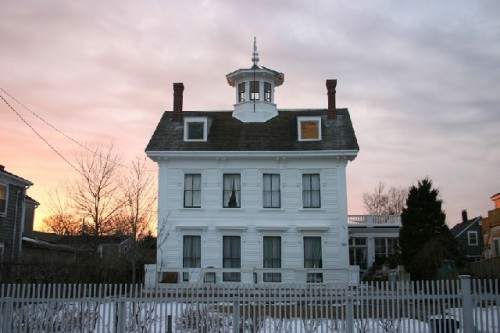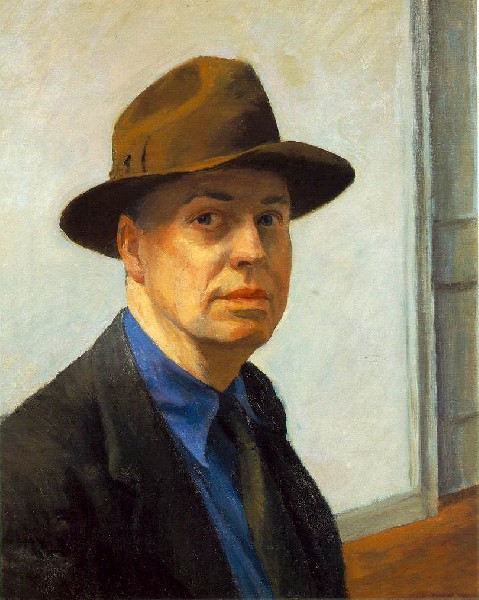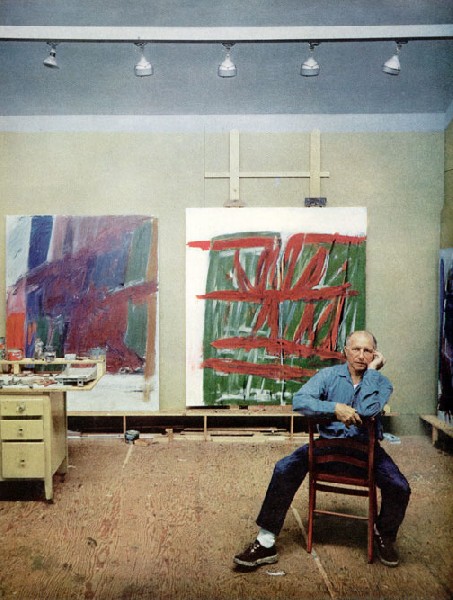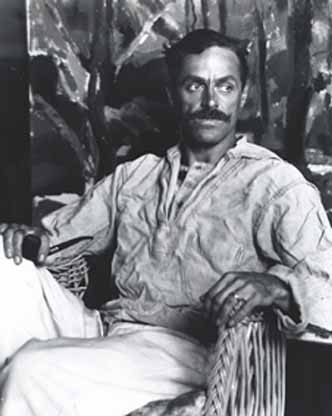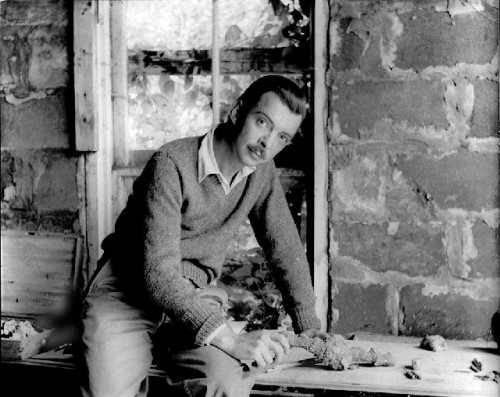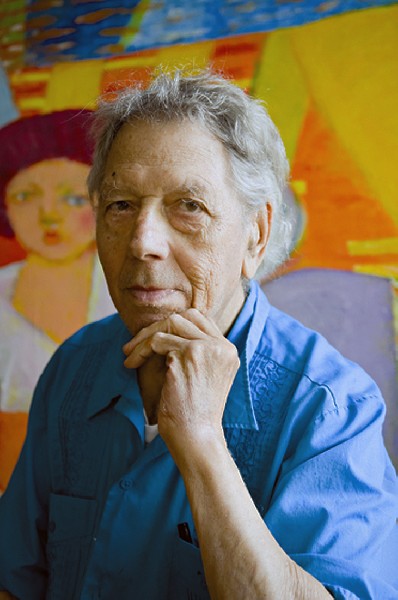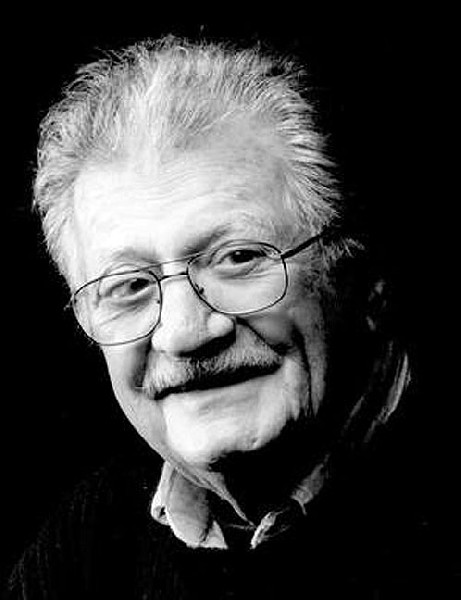P'Town's Christine McCarthy Part Four
Acquisitions, Endowment, and Education
By: Christine McCarthy and Charles Giuliano - May 01, 2013
Charles Giuliano It appears that the permanent collection which has grown from 1,000 to 3,000 objects on your watch is all gifted.
Christine McCarthy About 90%.
CG That means that you have no acquisition fund.
CM We have a small fund.
CG Have you considered growing that fund?
CM Absolutely. It’s a part of the Centennial.
CG What’s your target?
CM I’m not sure yet. When I started in 2001 there were two full time people including myself. With three part time people. We now have a staff of six full time and six part time employees. There are 230 volunteers. We have increased staffing but need more major positions. I never want to make it seem that a curator is the be all and end of deciding what’s on the walls here. I like the community interaction that we have. At the same time this is a person (curator) who could be out looking at studios. I do that periodically but I just don’t have the time. To be looking at what people are doing and discovering that next great Motherwell. That piece is missing as far as I’m concerned and we need that position. To look at what people are doing on the Cape. Because the Cape is large. There are a lot of people living here year round who are making work we don’t know about.
CG What is the status of the Reggie Cabral (1923 to 1996) collection?
(The colorful owner of The A House often accepted works of art to settle bar bills. He was secretive about letting critics and art historians see the collection which was rumored to include fakes by the abstract expressionists. But he also acquired many superb works including some of the original white line Provincetown print blocks. He discussed with me the possibility of curating a show of the collection at PAAM. When I showed up for an appointment he was not at home. During a follow up phone call he was abusive and that ended the hope of working with the collection. Despite a close relationship with PAAM he did not appear to consider the institution in his will.)
CM I have no idea. Nothing. It could be in a warehouse for all I know.
CG I heard that it went to his daughter April.
CM You might get a different answer from her every day.
CG Reggie had a major Bob Thompson which we borrowed for the Kind of Blue exhibition at PAAM. Thompson was a major Provincetown artist but is not represented in the PAAM collection.
CM True. We have a major work by Lester Johnson.
CG One can think of many major Provinctown artists not represented in the collection. What is sadly true is that the longer museums wait the more expensive the works become. To the point where it becomes impossible to fill gaps. That’s the dilemma of the MFA which stuck its head in the sand for too long. The ICA has only decided to collect in the past few years. Between those two major institutions, with the exception of Harvard and Brandeis, Boston is a major city with piss poor modern and contemporary museum collections. Even now, with the opening of the new wing, critics responded to the MFA’s modern and contemporary acquisitions, even over the past decade, as rather pathetic.
The collectors are aging. You talked about the great collection of Ruth Hebert who you stayed with when you first came for an interview.
CM That’s an example of a collection that we got.
CG What is the possibility of filling the gaps with the acquisition of works by major Provincetown artists? Have you compiled a punch list?
CM We definitely have. Edward Hopper was one of those people. Even though there is the Hopper dilemma. (His antipathy as a Truro resident of any involvement with PAAM and Provincetown. But clearly a major Cape Cod artist.) We had a Jo Hopper but not an Edward Hopper.
I lecture a lot about this place and its position in art history. I was doing a lecture and I said that one of the things we don’t have in our collection is an Edward Hopper. Everyone wants to see our Hopper and I tell them it’s not here yet. I jokingly said if anyone has one let me know. I got a call from Herman Merrill’s son. He said that “My mother has a Hopper that he (Herman) traded with him of a nude figure and our foundation wants to give it to PAAM.”
It’s a beautiful, beautiful drawing and Herman Merrill inscribed it on the back as a gift to his wife.
So yes we are compiling a hit list and our Centennial strategy is a hundred acquisitions of significance to fill in gaps in our collection. Our collections committee is in the process of putting that together.
We have a number of collections that are being left as in kind gifts here. I am trying to see if those gifts can be accelerated. Can we get those pieces now so we have them for the Centennial. Even though they might want to have them on extended loan for awhile so we can get them in the building. I think actually we will do quite well in that realm.
We have a big beautiful (Jack) Tworkov from the show that we did a couple of years ago. That’s on extended loan as an intended gift.
(“The collection’s painting is typical of Tworkov’s work in the 1950s: a colored expanse against which fiercely brushed linear strokes hide or cast a veil across the surface. Jack told me once how he yearned to paint a landscape directly in nature, and I’ve always seen these pictures of his as evocations of Cape marsh-grass or reeds. But in point of fact, this work is a preview of what was to become the magisterial painting of the last years before his death in 1982.” Tony Vevers
CG Perhaps I don’t understand the tax code but I understood that the loophole had been closed for donations of works of art. That the donors don’t get the full value of the work as a deduction.
CM If an artist donates they don’t but if a collector does they do.
With the Hopper, for example, we had an appraisal done and the donor is going to get a write off of the full value of the work.
If an artist donates they get to write off the value of the materials. That stinks and needs to be changed. That’s an issue that goes back and forth.
CG So there is an incentive to donate.
CM No question about it. Also knowing that it is going to a facility that is now capable of taking care of it. And will exhibit it.
CG That also seems to equate with a mandate in programming to function more as a museum. If you do ambitious shows and publications you get major loans which leads to important acquisitions. It’s all a part of the quid pro quo. Also having a collection provides leverage in working with other museums.
CM That’s true. We now get more loan requests than ever before. The fact that we’ve been accredited and now have a good history of borrowing has really worked in our favor.
One of the great stories comes from when we did the (Edwin) Dickinson show here and we borrowed from a private collector “The McMillan Pier in Wintertime.” It had been on extended loan to the Philadelphia Museum for fifteen years. When the donor came and saw the piece here he said this has to stay here. This is where it belongs. I said “Will you tell that to the Philadelphia Museum?”
For me having that exhibition with a major publication and getting that piece is why we need to be doing this kind of work. It brings things back which were created here.
CG It’s interesting that you mention Dickinson because beyond our immediate circle people don’t know who he is.
CM Nobody does. The Albright Knox did a major traveling show of Dickinson. But people don’t know who the hell he is.
CG For the Dickinson show we posted several articles by various contributors to Berkshire Fine Arts. We now have an enormous archive and we get a lot of Google searches for that material. On a consistent monthly basis we get significant traffic for the Dickinson articles. So people are indeed interested in the artist.
CM How about Blanche Lazzell? Nobody knew who the hell she was until the MFA did that show. Nobody knew who she was. I know you did. But the average person didn’t know her work.
CG She’s in the famous photo of Forum 49. There’s Blanche sitting on the bench along with Karl Knaths, Weldon Kees, and the other artists.
CM With her cardigan sweater on. We have two white line Blanche Lazzell prints gifted here. A donor said “I have two and I want to gift them to you. Do you want to know where I got them? In a flea market hanging on the back of a van. Marked down ‘second day.’ ” She bought them for $20. They have been appraised at $80,000. That’s crazy.
We did a small show in 2001 which was before the renovation. The MFA had done the show and we had a few Lazzell’s up. We borrowed a few from Napi. We had a couple in the collection. After we did that we got the two colored prints and a whole portfolio of studies and sketches for the blocks.
So that happens a lot when people know what you don’t have. They help you fill in the blanks.
CG This past winter I have been reading the history of jazz, blues and rock. I came across a reference to Weldon Kees (1914-1955). It just popped up out of the blue. Of course I knew him as the artist who organized the seminal, summer long project Forum 49. But here I was encountering him in an entirely other context as a part of music history and theory.
CM We have a great archive for Forum 49.
(“Forum 49 was a summer-long series of sophisticated programs held in 1949, beginning with the forum "What Is an Artist?" and ending with the controversial "French Art vs American Art Today." Record crowds attended the exhibits of paintings and programs focused on the avant garde in many areas (architecture, psychoanalysis, poetry, jazz) all held in a gallery at 200 Commercial Street.”)
CG It all comes full circle. At that time it seemed like Provincetown was the summer home of Tenth Street. The artists came and argued. Some of the topics, by today’s standards, were off the wall. Like the role of psychoanalysis in art.
(Relevant at that time because of the influence of surrealism on the development of abstract expressionism. It was only later discovered that Pollock made a series of drawings to discuss while undergoing Jungian analysis. They were gifted to his therapist who later sold them through Boston’s Nielsen Gallery. The portfolio was proposed as an acquisition to the MFA which turned it down. The works were then sold individually.)
That was on the radar screen at the time with artists like Matta.
Walking down Commerical Street to PAAM today we passed a building which I remember from when I first came here as a student in the 1960s. I recall that as the Kootz Gallery. That became HCE which Nat Halper ran. I recall seeing a Bruce Conner relief sculpture in a summer space run by Ivan Karp. There were a number of important galleries and dealers at that time. There was a serious presence.
The artists came here, hung out, talked, looked at each other’s work. It felt like a crit center.
CM Knaths, Avery, Merrill. They all went to each other’s studios. They sat and talked to each other all day long. They went to the East End to a place now called The Patrician which was a soda fountain. They would sit there and talk and talk and talk.
CG Is that dialogue happening now?
CM We have a lecture series which is pretty well attended. We get a hundred people for every lecture.
CG Do they fight and argue?
CM When John Grillo (Born 1917) did his lecture he was in his 90s. When he started talking about the reason he had so many affairs was because of his big. That certainly caused controversy because he was 95-years-old. That kind of thing still happens occasionally. It’s not fighting and screaming. I would say it’s more intellectual conversations which are stimulated.
We do a series of art films and there is always a good argument after. It’s a winter thing we do that’s really well attended.
CG We are on the cusp from the past hundred years to the future. When we think of the past we envision a place where artists could come and get a cheap rental for a shack, dig clams on the beach, and make their work. Now when you drive around the prevailing sense is that everything is quaint and cute. All of the homes have been renovated. Those simple cottages and waterfront condos are just prohibitively expensive. We go from funky to cute to what?
CM When Provincetown is fun and funky is February. We go clamming in February then have a fantastic dinner party that goes until three in the morning. Talking about all kinds of stuff. There are now less than 4,000 people here year round. I don’t want to hang out with the 60,000 people who are here in August. I’m so glad that they come into this museum and support it. But are these the people I sit around and have clams with? No. Because they blow in and blow out. People who really live here and appreciate Provincetown, like my friend Jimmy, who just got back from a dune shack where he painted for a week. We just had some clams and talked about the dune shack. He lives here year round. He starts his restaurant job next week and will work his ass off until September. Then he’ll get back into it again.
It’s so expensive and hard to live here. There are like just a few jobs with benefits. It’s hard to live here. People get discouraged and they move somewhere that they don’t have to work four jobs just to pay their rent. Or live in a place with off season rent for five months and then have to move out.
CG How has that worked for you?
CM When I came here the first year I had a summer rental which cost as much as I paid for my Boston apartment for the year. I had a kick ass apartment in the North End (of Boston). I loved it. I lived on Garden Court Street and I thought I would be buried there. I couldn’t believe that I was paying four times what I paid for my beautiful North End apartment for a dump. It was a dump. It was like the size of this bench. But where else was I going to live?
That fall I moved, which is the bi polar nature of Provincetown in many ways, to a winter rental on the water, from October to May, and it was the most beautiful house I ever lived in. It was cheap as a winter rental but then I had to be out again.
I don’t like moving so I found a condo on the other side of Route 6, away from the riff raff, and I’ve owned it now for eleven years. I couldn’t do the back and forth stuff. The opportunity to live in that house on the water for the winter was magical.
CG One would think that the board provides lodging for the director.
CM Yes. The Fine Arts Work Center provides its director with a house. When I moved here the board members were giving $40 a year and they thought that was all they should be giving.
CG I take it that it’s more than that now.
CM I have a much more sophisticated board now.
(President, Judyth Katz, Vice President, James Bakker, Treasurer, Joy McNulty, Secretary, Marian Roth; Lennie Alickman, Ellen Burbank, Arthur Cohen, Paul Dart, Doug Dolezal, Charleton Dukess, Sharon Fay, Joe Fiorello, Stephen Fletcher, Ruth Gilbert, Terence Keane, Brian Koll, Lise Motherwell, Jane Paradise, Anne Peretz, William Rawn, Irma Ruckstuhl, Stewart Tabakin, Carol Swarshawsky, Gail Williams)
When I was hired here my salary was 50% of what I was making at the ICA. So I spent my savings to move here.
CG Why did you do that?
CM Because I got to be the director of a museum. Look what I built. It was the biggest risk I ever took in my life. My board has done well by me. I took a huge risk.
CG Did it pay off?
CM Huge. I’m so proud of this. The space, the programming, and the many people who participate.
CG Will you be buried in P’Town?
CM I was raised Catholic but I don’t practice. I went to Ciro’s funeral at Saint Peter’s. I’m going to tell you it was the most beautiful funeral. Sal got up and sang an Italian song. This lady got up who had been a childhood friend of Ciro’s kids. She talked about what it had been to be a kid wandering in and out of Ciro’s life. There was a fire at St. Peter’s so they’ve renovated it. There’s stained glass windows. The altar is a giant rock. It’s a huge rock. It’s the Catholic church up on Prince Street near the Monument.
As I was listening to this I thought, Oh My God, I definitely want to be cremated. But I want to have my service here at St. Peter’s Church. I want part of my ashes spread here and part of my ashes spread in Old Saybrook, Connecticut where I grew up. I grew up on the shore and have an affinity for the shore which is where I have spent the best times of my life.
As far as this place I could never have gotten this far in my career unless I was handed something and told to figure it out and do it. The ICA helped me to do that. It was in such turmoil and transition for so long that you had to be proactive in figuring out who is going to help you. How are you going to get to them? What can you do for them? That’s very much how I operate.
I still keep in touch with many, many people in Boston. I teach at BU in the arts administration program. I have been there for eleven years. One of the best collectors in Boston comes to my class each year. She still does this for me.
I went to the 75th anniversary celebration for the ICA last year. I was sitting there and they had a slide show going. You were looking at images of when the ICA was on Soldier’s Field Road. Then they did the years when I was there. I was looking at the exhibitions and thinking I’m so proud of this.
I’m very proud of my career track. I’ve been working in the arts now for 25 years. I don’t know anything else. This is what I know and this is what I love. I love that we can do so much for so many people here.
Whether you’re an artist or a kid who is being bullied at school. Kids can come here and be safe. People can say what they want to about the programming and content of what goes on here but I know what it takes to go from a building that was falling down to a major competitor in the field of small American museums.
If you compare us with our sister museums- Bennington, The Farnsworth, Newport, New Britain- we’re right up there. We all collaborate. We lend to each other and talk to each other. We were accredited because we run a “best practice” and that’s what I’m very proud of.
Astrid Hiemer Can you talk about why you’re a Green building?
CM We have a green roof and when the temperature and humidity reach an idea level inside the system shuts down and allows in fresh air. If I leave the lights on as the night went on and it gets darker the lights will get brighter. We save energy. When we renovated we recycled all of the materials. From the floors to beams. There are three or four houses with floors and ceilings repurposed from what we tore down. We used green paint. We use green cleaning products. We have low flow toilets and lights that shut off automatically. A lot of it is just common sense. We were certified by the green buildings association in 2007. We got about $300,000 in grants for implementation.
CG What is you endowment?
CM In the bank we have about $3 million. In the pipeline there is about $8 million. We would like to endow my position and that of a curator. We would like to build an acquisitions fund. And support education like the programming for kids. We’re not going to get NEA funding forever or Mass Cultural funding forever. So we want to build up reserves for the education programming because I could never get rid of them. I want to make sure we have the youth programs here.
Right now we are focused on plans for the Centennial Year.

